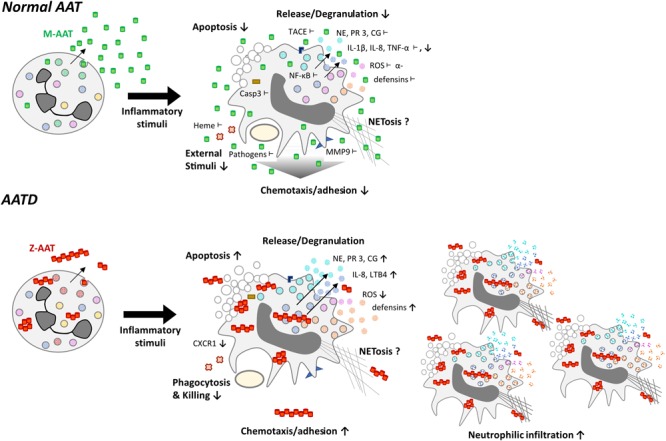FIGURE 3.

Functional differences of neutrophils expressing normal (M-variant) and deficient (Z variant) of AAT. Normal AAT is an effective anti-protease, but also possesses broad anti-inflammatory and immune-modulating properties, which are of pivotal importance in controlling neutrophil activation. Symbols show inhibitory effects of AAT on neutrophil activation: ↓ -lower levels and ⊥-directly interacts. The AATD neutrophils producing Z variant of AAT (Glu342Lys) have an impaired ability to kill bacteria, exhibit reduced production of reactive oxygen species (ROS) and lower levels of C-X-C motif chemokine receptor 1 (CXCR1), a receptor to IL-8, which is a powerful neutrophil chemotactic factor. The Z-AAT protein forms polymers, which are chemotactic and contribute to increased neutrophil chemotaxis/adhesion and accumulation. Moreover, Z-AAT is less active as anti-protease and possesses lower immune-modulatory activities, which leads to uncontrolled neutrophil activation, and the release of pro-inflammatory molecular species.
